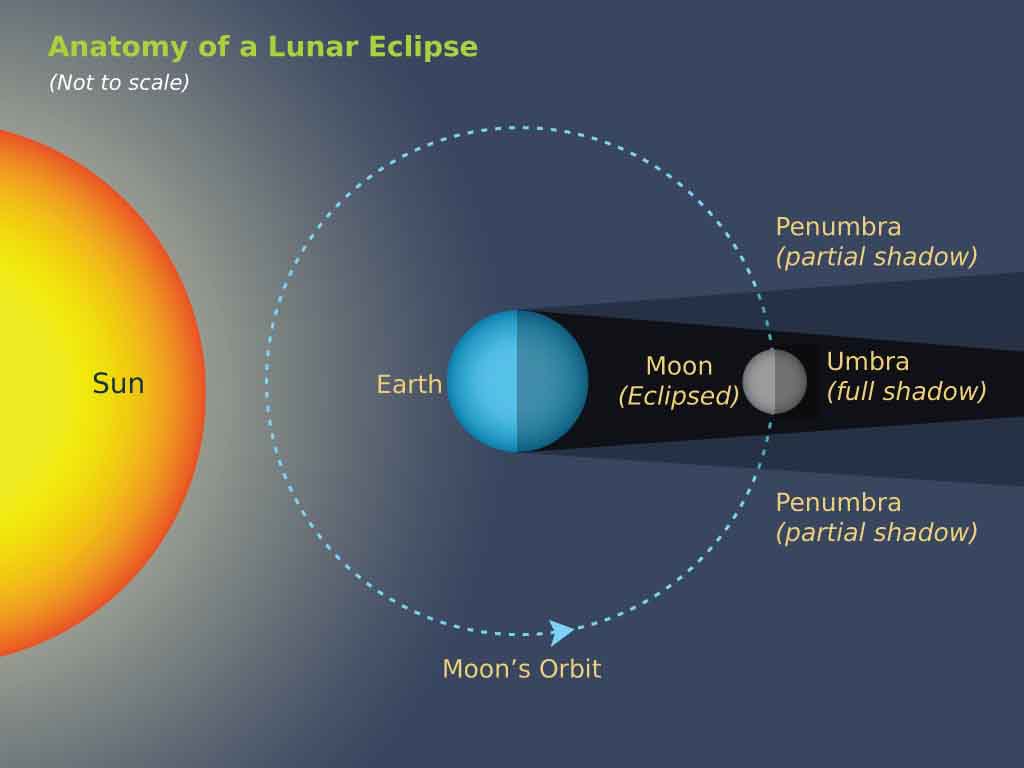Throughout history, blood moons have been associated with bad omens. In Chinese tradition, a blood moon foreshadowed famine or disease. Mesopotamians believed that a lunar eclipse resulted from attacks by demons. But on Sept. 27, from 10:11 p.m. to 10:37 p.m., when the moon turned red, there were no famines or attacks. Beautiful and eerie, this colouration is caused by a total lunar eclipse. Unlike solar eclipses, which are rare and only visible from specific places on Earth, lunar eclipses occur at least twice a year. They’re visible to almost any part of the world, as long as it’s night when the eclipse is happening.
What made this particular lunar eclipse so special was that this occurred during a supermoon—when the moon is at its closest point to Earth during its orbit, and looks bigger than normal. This was the first time in over 30 years that a supermoon and a lunar eclipse coincided.
A lunar eclipse occurs when the sun, Earth, and moon are aligned with Earth in the middle. As the moon creeps into the Earth’s shadow, it gradually disappears from the view of people on Earth. Once the moon enters the umbra—the central part of Earth’s shadow where all direct sunlight is blocked—a total lunar eclipse occurs. At this point, the sunlight that passes through the periphery of Earth’s atmosphere is scattered, giving the moon a red hue.
In the same week, NASA scientists released their latest discovery—evidence of water on Mars. Published in Nature Geoscience, the article detailed their use of Compact Reconnaissance Imaging Spectrometer for Mars (CRISM) to obtain data that supported their hypothesis that flowing water exists on Mars. CRISM is a specially designed spectrometer which studies the absorption of light of different wavelengths. In this way, it maps the presence of minerals and chemicals on Mars that may indicate past interactions with water.
Lujendra Ojha, PhD candidate in planetary science at Georgia Institute College, lead the project. The idea first came to him when he discovered that high-resolution images of Mars showed narrow streaks of low reflectance compared to the surrounding terrain. These dark streaks are generally a few meters wide and 1.2 kilometers long. Ojha and his colleagues named these gully-like structures Recurring Slope Lineae (RSL), because the RSL would disappear and reappear seasonally. To be clear—RSL’s are not bodies of water. Rather, they’re geological structures whose formation may involve flowing water.
To prove that RSL’s were indeed created by flowing water, Ojha obtained spectra samples with CRISM from several areas where RSL were present. By comparing the spectra of RSL to spectra of a known substance, he was able to determine their compositions. In all the sample sites his team studied, they observed “water-related [spectrum] absorption features,” as well as minerals such as chlorate and perchlorate salts. From this, Ojha concluded that the RSL must be formed by highly-salted solutions, and not pure water. This is consistent with the fact that in order to have water flowing on Mars, it must be high in salt to have a low freezing point.
“Although the [amount of] water in [the] perchlorate solution may be too low to support known terrestrial life […] this enhanced evidence of water flow also provides new clues as to the nature of the current Martian hydrologic cycle,” Ojha wrote in his article.
While the quest for life goes on, much can be derived from the understanding of the climate, the soil, and the atmospheres of places like Mars.








